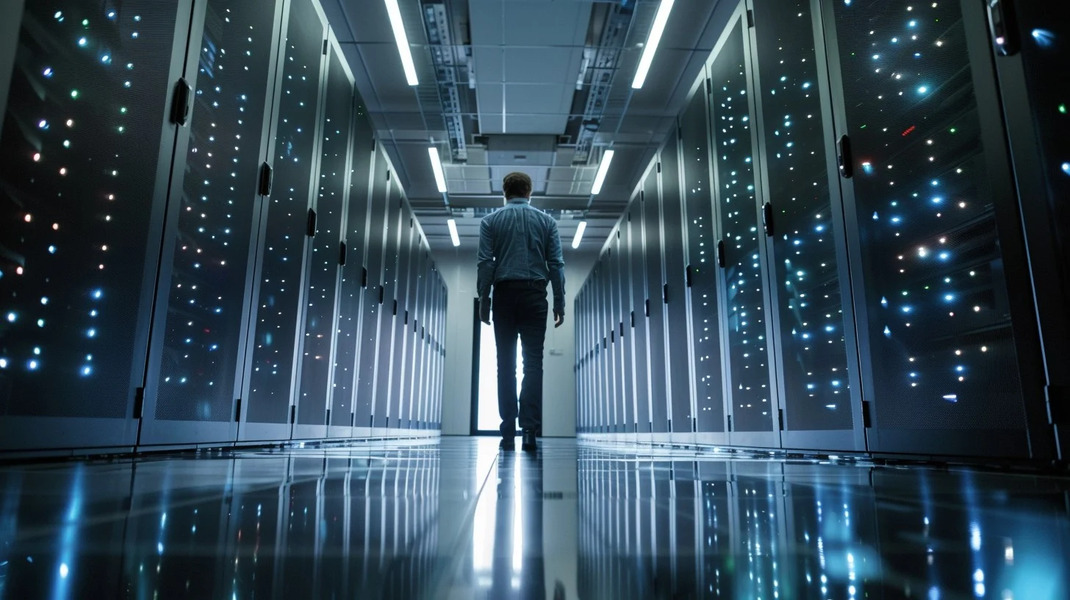Apple v. FBI Primer #2: On Judge Orenstein's Ruling in the Queens Meth Case
What follows below is the second in a series of primers for those who are interested in the continuing fallout from Apple’s decision to resist government requests for technical assistance in overcoming passcode protections on iPhones. The first one used a FAQ format to provide an outline of (and context for) the key points in Apple’s brief last week in the San Bernadino iPhone case.
Published by The Lawfare Institute
in Cooperation With

What follows below is the second in a series of primers for those who are interested in the continuing fallout from Apple’s decision to resist government requests for technical assistance in overcoming passcode protections on iPhones. The first one used a FAQ format to provide an outline of (and context for) the key points in Apple’s brief last week in the San Bernadino iPhone case. This one does the same for the opinion Magistrate Judge Orenstein issued on Monday in a somewhat-similar case involving a meth conspiracy in Queens. [UPDATE: Marty Lederman has a good post on the opinion here.]
So this new opinion is not about the San Bernadino litigation that blew up social media last week?
That’s right. Before there was a San Bernadino iPhone dispute, there was a Queens meth conspiracy iPhone dispute unfolding before a magistrate judge in the U.S. District Court for the Eastern District of New York. And as Judge Orenstein’s opinion points out, there are plenty of additional currently-pending iPhone cases that are in a similar vein (he notes a dozen such cases, including San Bernadino). I believe Judge Orenstein is the first to deliver a detailed opinion on the statutory question that all these cases raise; his won’t be the last, of course.
How does the government’s request in the Queens iPhone case compare to its request in the San Bernadino case?
The central legal issue in both cases is whether the All Writs Act (see Primer #1 for an overview) can properly be read to compel Apple to provide technical assistance that Apple very much does not want to provide. So they are very similar in that respect. On the other hand, they differ in terms of the specific technical assistance requested, and it is possible that this factual distinction might at some point produce different results in the two cases. In the San Bernadino case (involving an iPhone 5c running iOS 9) the government wants Apple to create (and install on the phone in question) a bespoke variant iOS that will disable features designed to prevent brute force cracking of the passcode (thus paving the way for FBI to crack that specific phone’s passcode in precisely that way). The Queens case does not require such a step because the phone in that case is an iPhone 5s running iOS 7, and as I understand it Apple already has the capacity to circumvent the passcode for that particular configuration. So, from that particular perspective, Apple has more to complain about vis-à-vis San Bernadino than Queens.
Is this ruling the last word in the Queens case, and does it control (or will it at least influence) the San Bernadino ruling that will follow sometime later?
No (to all those questions). There is little doubt that the government will appeal the Queens ruling, which eventually may lead to a ruling from the Second Circuit Court of Appeals. The San Bernadino case arises in a different circuit—the Ninth Circuit—and so would not be bound by anything that occurs in the Queens litigation, unless of course the Queens case gets all the way to the Supreme Court and produces a ruling with broad application. That said, all the judges (and clerks, and litigators) working on these similar cases are certainly taking note of any and all the rulings, and will use them for reinforcement where they can. Bottom line: Judge Orenstein’s ruling is just the first of what likely will be many cases in this area.
Ok then, let’s hear about Judge Orenstein’s ruling. As an initial matter, did he have the occasion to weigh in on the First Amendment and Fifth Amendment arguments that Apple trotted out at the tail-end of their brief in the San Bernadino case?
Nope. Judge Orenstein’s ruling is pretty much all about the All Writs Act (which also was the main focus of Apple’s brief in San Bernadino, to be clear).
How did Judge Orenstein describe the analytical framework under the All Writs Act?
He framed it as a two-stage inquiry, with the government needing to prevail at both stages in order to get the order compelling Apple to help.
Stage 1: First, he parsed the language of the statute to conclude that the government must show that the order it seeks satisfies three distinct tests:
(i) the order will “aid” the court in the exercise of its jurisdiction;
(ii) the order is “necessary and appropriate” towards that end; and
(iii) the order would be consistent with “the usages and principles” of law.
Stage 2: He next concluded that the court would still have discretion to deny the order if various factors favored doing so, even if the statutory tests noted above all were satisfied.
Cut to the chase: Which of those stages tripped up the government?
Both, actually.
What was the problem with respect to Stage 1?
He concluded that the requested order was not compatible with “the usages and principles” of law.
The parties disagreed as to just what that language means. The government argued that this test could only be a problem if there were an explicit statute shielding Apple from being compelled to give technical assistance in this circumstance. Apple argued that the test should be read more flexibly, so as to foreclose as well any situation in which Congressional disapproval might be implied, even if the implication is drawn from something as nebulous as the situation in which Congress in some sense considered taking a particular action but ultimately chose not to do so.
Ultimately, Judge Orenstein agreed with Apple’s interpretation, and he concluded that the government loses under that standard because (i) Congress has frequently been apprised of the “going dark” issue and related questions such as whether to alter CALEA to encompass additional industry sectors and (ii) Congress nonetheless has chosen to take no action thusfar.
The judge also wrote at some length about how various canons of statutory interpretation favored this conclusion, including especially the canon against interpretations that would raise constitutional questions. What constitutional question, you might ask? In a section of the opinion that stands out from the rest for its somewhat-sharp rhetoric, Judge Orenstein offers somewhat fiery rhetoric describing the government’s proposed use of the All Writs Act as a bid for “crypto-legislative authority” (“crypto”…I see what you did there!) carried out (up till recently) outside the public’s eye in a “considered decision” to obtain a result under the All Writs Act that did not seem available through the legislative process. (p.29) I got a strong sense that this perception was, at bottom, what drove the outcome in this case.
In any event, Judge Orenstein also argued that the government in any would have lost even under its own preferred, stricter interpretation of the “usages and principles” test, on the alternative theories that (i) CALEA can be read as having decided expressly to exempt companies like Apple from having such obligations or (ii) CALEA can be read in combination with other technical assistance statutes to form a more-general legislative framework that collectively reflects a Congressional decision as to who has such duties and who does not.
So Apple had already won at that stage. But what was the court’s stage 2 analysis?
Judge Orenstein’s Stage 2 analysis is, at bottom, a series of examples to the effect that this case can be distinguished from the paradigm of proper compulsion established by the Supreme Court’s 1977 decision in New York Telephone Company (again, see Primer #1). The key variables, in Judge Orenstein’s view, included:
- that Apple and its product are quite distant from the underlying criminal activity at issue in the Queens case;
- that Apple has done nothing affirmative to impede the investigation;
- that Apple faced an undue burden in terms of being forced to act contrary to preferences that it viewed as important both to its business model and to the policy preferences of Apple’s leadership; and
- the cumulative cost of having to provide technical assistance (though not spelled out in this case as they were in the San Bernadino litigation) might be substantial at least when added up across all similar cases in which the same relief could and would be sought.
Finally, the court advanced a slippery slope argument, noting that “[n]othing in the government’s arguments suggests any principled limit on how far a court may go in requiring a person or company to violate the most deeply-rooted values to provide assistance…” (p.44).
Is that all?
No. Judge Orenstein separately finds fault with the government’s application on the ground that the government has failed to prove that it truly has to have Apple’s help in order to bypass the passcode in this case. And why did he think this? That’s rather interesting.
First, Judge Orenstein emphasized that the government had represented at one point in this litigation that it lacked the tools to circumvent the passcode, but that in a separate case two months earlier a witness had testified that DHS had acquired some type of brute-force tool that might actually do the trick in such cases. Apparently the judge later asked, at oral argument, about this seeming discrepancy, and was told that the DHS tool was not universally applicable, and in any event ran a serious risk of triggering the loss of data on the phone. Rather than accept that answer, however, Judge Orenstein concluded that “the government has made so many conflicting statements in the two cases as to render any single one of them unreliable.” (p. 48)
Speaking of necessity...can't DEA and FBI just go to NSA for help? Or more to the point, should the government have to show it cannot get such help before a private company can be obliged to assist?
What a good question. Apple, in its San Bernadino brief, mentioned the possibility that the government perhaps should not be allowed to compel it to help under the All Writs Act absent some reason to believe that the government as a whole--including NSA--can't do the job. Well, the same question arose in the Queens case. But Judge Orenstein decided to confine his treatment of it to dicta relegated to a footnote (n.38, on p.46). On one hand, he noted that the right legal answer might be that the capacities of the Intelligence Community are not relevant in deciding whether criminal investigators sufficiently need Apple's help. On the other hand, the judge seemed very unhappy that the government in this instance had made a broad assertion that the government flat-out lacked the capacity in question but was not now willing to say whether the capacity did in fact exist within the Intelligence Community.
It will be very interesting to see if some future case will squarely tee-up this subsidiary legal question.
Is it fair to say that Judge Orenstein seems hacked at the government?
Yes, it does seem that way. But that pun is terrible.





